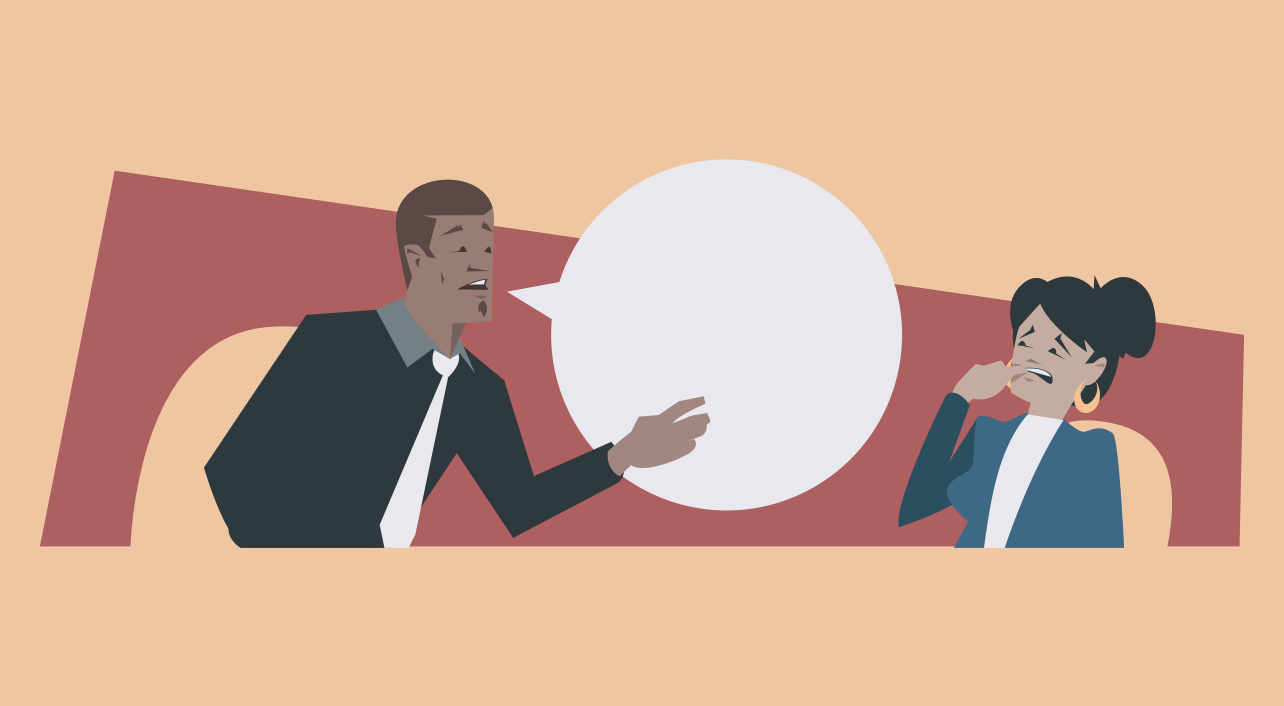- sales
- Blog post
Let your buyer know the risk – but do it the right way
Despite what the infomercials say about “risk-free trials,” nearly every product or service carries some risk – and that probably includes whatever you sell.
Financial investments may lose value. A consultant’s advice may not work. Even an insurance policy is risky – if nothing bad happens, the premiums are money down the drain. Or perhaps you sell a cutting-edge product that improves customer results in 95% of cases – but can boomerang in a few instances.
For you, the salesperson, risks like these raise a question: What do I tell my buyer about them? Of course, I don’t want to try to hide risks, even small ones; that’s counterproductive if I want a long-term relationship with the customer, and besides, it’s not ethical. But there must be a way to disclose risk that won’t hurt my chances of making the sale.
Fortunately, there is, and a study on buyer behavior and risk disclosure reveals it. Bonus: If you go about disclosing risk in the way the study suggests, you can actually improve your odds of getting the sale.
Three choices
Think about the opportunities you might have to tell your buyer about the risks – even minor ones – that they might run in purchasing your product or service. There are essentially three possibilities:
- Reveal the risks early, and don’t try to soft-pedal them
- Reveal the risks early, but reassure the buyer that they’re very unlikely to occur, or
- Bring up the risks at or near the close, after the buyer is fully engaged
Which is the right approach? To find out, let’s take a look at that study, which was based on an experiment with a truly risky product: cigarettes. Of course, you’re not selling anything that dangerous. But cigarettes offer a great opportunity to study how buyers process information about risk.
The research study
In the experiment, researchers showed smokers various cigarette advertisements. Half of the smokers were shown ads with no health warnings. The other half saw ads with strong warnings about the risks of smoking. One warned smokers to “pay attention to unusual feelings of stress or weakness” because of possible heart attacks or strokes. Another warned of hair loss, headaches and immune system damage. A third warned of “considerable weight gain.”
After viewing the ads, the smokers were asked if they’d like to order cigarettes. Some smokers were told they’d get their cigarettes within a day – what the researchers called a “near future” condition. Others would have to wait three months – what was called a “distant future” condition.
The timing made a huge difference in the way the smokers perceived risk. For those in the near-future condition, the warnings were a deal-killer. These people ordered 75 percent fewer cigarettes than the smokers who’d seen no warnings. But for the smokers in the distant-future category, something strange happened: they actually bought more packs of cigarettes — 493% more.
Time frame is key
What’s all this mean? How could the exact same warnings make people less likely to buy in the short term, but more likely to buy over time?
The researchers suggest that it’s because the negative information created two competing reactions in buyers.
If they had to make a decision that affected them right away, fear predominated. But when the outcome of the decision was pushed several weeks into the future, attitudes shifted. The fear faded, and buyers saw the warnings in a different light: as a sign of trustworthiness. “They’re not hiding anything,” buyers thought. And that trust made them disposed to buy more.
A follow-up experiment involving artificial sweeteners confirmed these findings. This time, the lag was just two weeks, but the results were similar. When people could order right away, those who saw ads containing health warnings ordered 94% fewer packets. But when they had to wait for delivery, they ordered 265% more packets than people who saw no warnings. Experiments with other products showed similar results.
Building trust
You’ve probably already grasped how these experimental results answer the question we asked about the best way to disclose risk: Go ahead, early in the sales process, and let your buyer know about any downsides. It’s the right thing to do, and it helps build trust with the prospect.
Doing it early will give the buyer’s fears time to dissipate. Doing it toward the end of the process, by contrast, means the buyer’s fears will be top-of-mind when you ask for the close, and could sink the sale.
The experiment also suggests that there’s no need to soft-pedal bad news. The health warnings were frank: They warned of heart disease, stroke, hair loss and weight gain, all pretty substantial risks. Yet those in the distant future condition still bought lots of product.
Of course, there’s no need to go overboard when you describe the downsides of your product or service. And you don’t need to describe every conceivable drawback – only those that are relevant to your buyer. But you earn trust when you don’t try to minimize the risks or explain them away.
This blog entry is adapted from the Rapid Learning module “How and When to Disclose Risk to Prospects,” based on the following research study: Steinhart, Y. et al. (2013). Warnings of Adverse Side-Effects Can Backfire Over Time. INSEAD Working Paper No. 2013/84/MKT.

Get a demo of all our training features
Connect with an expert for a one-on-one demonstration of how BTS Total Access can help develop your team.



